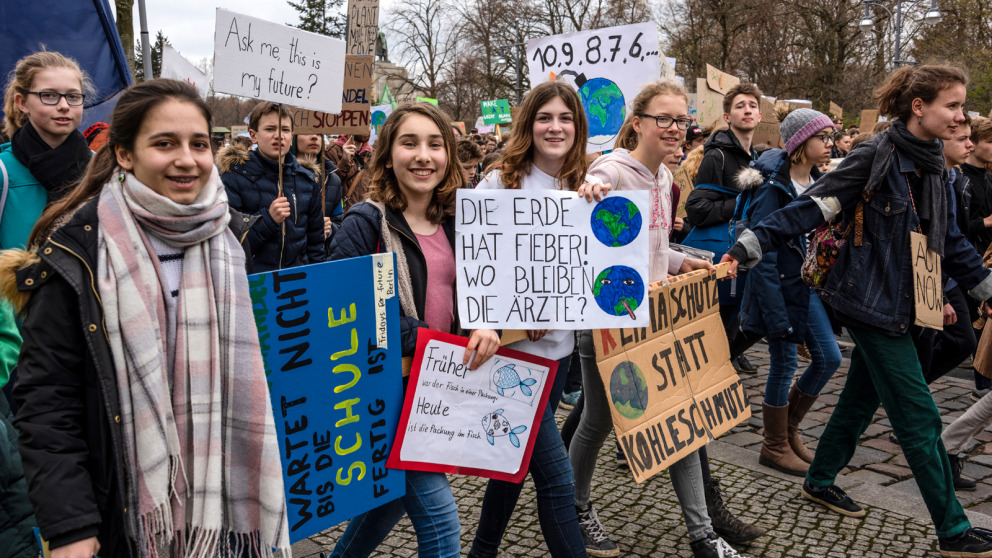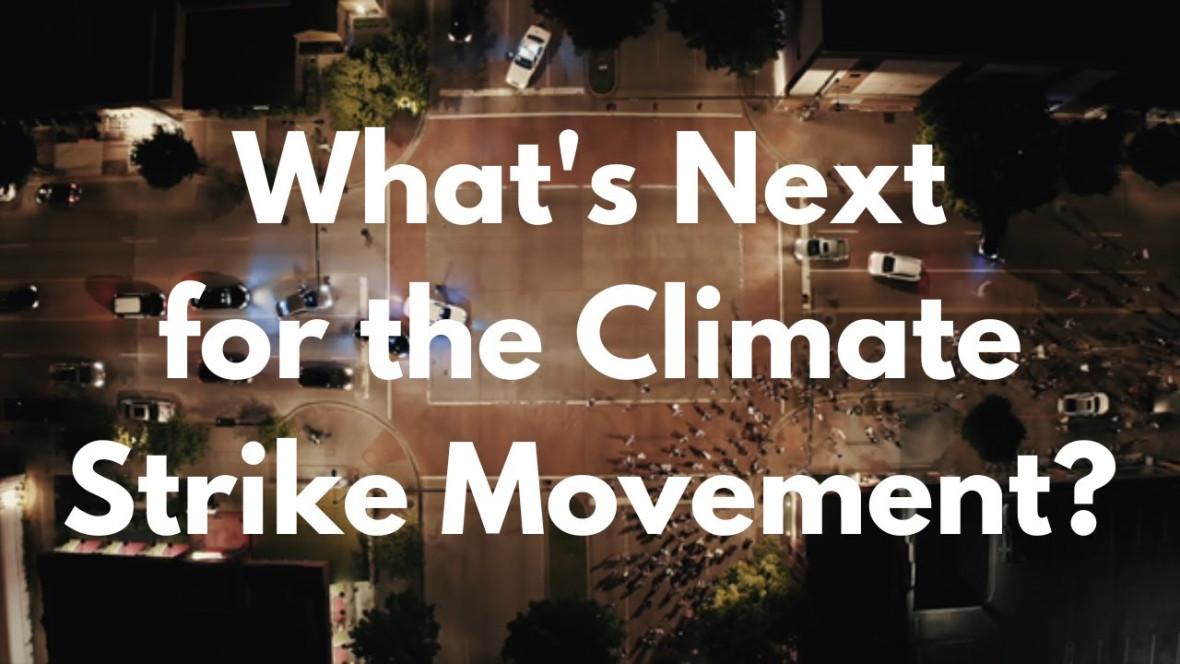Is there a Future for the Climate Strike Movement?
11.12.2022

Four years ago, the student-led climate strike movement took the world by storm. Ever since, the strikes have played an important role in the strategic repertoire of the global climate movement. Yet as emissions keep rising, even mass protests with millions of participants have proved unable to build sufficient political pressure to secure meaningful political concessions. This presents a strategic dilemma to the movement: How does one even strike amidst an escalating climate crisis?
At astonishing speed, the youth-led climate strike movement has become one of the most vibrant social movements of our time. Following the founding of the first Fridays for Future group in late 2018, its student organizers achieved within months what veteran activists had been unable to build in decades: a sustained and globally coordinated mass movement dedicated to climate justice. At the peak of the first mobilization cycle in September 2019, more than six million people participated in climate strike actions. At the time, many hoped that the school climate strikes would evolve into a movement with a broader composition. In the words of a Fridays for Future organizer from Stockholm in the early days of the movement: “It would be so great if something like all of Stockholm went on strike. If we get the unions on our side. If all the bank people don't go to work. Then there's a problem.”
Things proved to be more complex. Even as climate strike groups popped up on virtually every corner, Fridays for Future struggled to expand its base beyond the urban middle class milieu from which it had originated. While progressive NGOs, Green parties and even business owners in many countries were happy to back the protests, labor unions and social movements were more reserved in their endorsements. Globally, the most prominent immediate outcome was a series of “climate emergency” declarations by governments, businesses, and universities. Rarely, however, were these verbal concessions backed up by actual material adjustments to the fossil economy. Emissions continued to rise. With a grain of consternation, Greta Thunberg concluded in late 2019: “We have achieved a lot, but if you look at it from a certain point of view, we have achieved nothing.” Shortly after, the coronavirus pandemic brought the first climate strike cycle to a grinding halt.
New Language, Old Praxis
It would be a mistake, however, to write off the global climate strikes as a failed strategic experiment. In many ways, the movement’s development only started during the pandemic. The #BlackLivesMatter uprisings of 2020 and the tangible experience of vaccine apartheid (the inequitable global distribution of vaccines during the pandemic) spurred crucial internal debates about climate justice, capitalism, and the injustices ingrained in the current world system. Last year, activists from the Global South (self-identifying as those hailing from MAPA, most affected people and areas) took over the movement’s global communication channels. This has resulted in more openly justice-centered messaging. In a much-noted call in September 2021, Fridays for Future wrote:
The climate crisis does not exist in a vacuum. Other socio-economic crises such as racism, sexism, ableism, class inequality, and more amplify the climate crisis and vice versa. It is not just a single issue, our different struggles and liberations are connected and tied to each other. We are united in our fight for climate justice, but we must also acknowledge that we do not experience the same problems; nor do we experience them to the same extent. MAPA (Most Affected Peoples and Areas) are experiencing the worst impacts of the climate crisis and are unable to adapt to it. This is because of the elite of the Global North who have caused the destruction of the lands of MAPA through colonialism, imperialism, systemic injustices, and their wanton greed, which ultimately caused the warming of the planet.
While Fridays for Future’s messaging signals a turn towards a more resolutely emancipatory politics of climate justice, it is yet to back up this commitment with a praxis that goes beyond the old consciousness-raising approach. The latest global climate strikes still largely resembled the demonstrations of 2019. They were accompanied by a social media and communications strategy aimed primarily at raising awareness and calling on government leaders to change their ways – a contradiction epitomized by Greta Thunberg’s call for world leaders to themselves “uproot the system” that had brought them to power in the first place.
Striking Together
Given its ‘post’-pandemic revival under new leadership, the global climate strike movement now has the chance to return to the initial idea of the climate strike as a more comprehensive form of action. While the primary locus of the climate strike has so far been in the sphere of social reproduction, as embodied by the school strike, why not consider expanding its scope to also strike other realms of economic activity, such as the production and circulation of planet-wrecking commodities? As with the successful strikes of past centuries, the climate strikes could also be used as a platform to facilitate forms of direct action, democratic experimentation, and mass education. Most importantly, however, the climate strike movement can’t do it alone. It will require new alliances with other actors such as labor unions, feminist groups, Indigenous, anti-racist and anti-colonial movements.
To organize, coordinate and synchronize these alliances across interest groups and to put the climate strike on broader shoulders may seem to be a daunting, if not impossible task. But in the face of impending planetary disaster, it should at least be worth trying.
What do climate strike activists themselves think about the future of their movement? And how are other researchers addressing these questions? For my research project “Theorizing the Climate Strike”, I conducted more than a dozen interviews with activists and academics from all continents. These interviews are now available on the IASS Youtube channel (@iasspotsdammedia).
- What’s next for the Climate Strike Movement?
- Tonny Nowshin: “We need to power up the game”
- Kristian-Marc James Paul: Building international solidarity and broadening coalitions
- Lasse Thiele: “If we are ever to win, we need an effective climate strike”
- Mitzi Jonelle Tan: “We need to have more specific demands”
- RK Upadhya: “Be more disruptive, but with a plan”
- Kentaro Yamamoto: “We need to change how we produce things and organize our economy”
- David Fopp: “The idea of the strike is still powerful!”
- Jacob Blumenfeld: “The enemy is climate solutionism”
- Kevin Mtai: “We need to fight for Loss & Damage”
- Darrel Moellendorf: “We are still at an early stage of this process”
- Archana Ramanujam: “We won't make it if it is just about decarbonization”
- Iván Daniel Martinez: “No climate action without Indigenous people and frontline communities”
Media
What’s next for the Climate Strike Movement?
